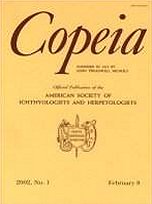Based on examination of 655 ciscoes from Lake Saganaga, a Minnesota/Ontario border lake, three forms, about 90% separable on gill raker counts, are present. Form L, with the lowest gill raker counts (26–40, mean = 31.9, n = 96) is tentatively identified as Coregonus zenithicus. Form M, with intermediate gill raker counts (36–50, mean = 43.1, n = 92) was the only cisco anticipated to occur in lakes of the region and is assumed to represent Coregonus artedi. Form H, with 45–70 gill rakers, mean = 56.1, n = 467, is the most common cisco in the lake. We argue that the appropriate name for this form is Coregonus nipigon. Additional differences among the three forms include lateral-line scale and vertebral counts, gill raker length, body shape, fin pigmentation, size at sexual maturity, and maximum size. Seagull Lake, affluent to Lake Saganaga, contained only C. artedi (n = 108). Gunflint and Magnetic Lakes, also affluents to Lake Saganaga, contained C. artedi (n = 19) and C. zenithicus (n = 29). Lake Saganagons, immediately downstream of Lake Saganaga, based on only eight available specimens, appears to contain C. nipigon (7) and C. artedi (1).
How to translate text using browser tools
1 December 2003
Analysis of Three Cisco Forms (Coregonus, Salmonidae) from Lake Saganaga and Adjacent Lakes Near the Minnesota/Ontario Border
David A. Etnier,
Christopher E. Skelton
ACCESS THE FULL ARTICLE





